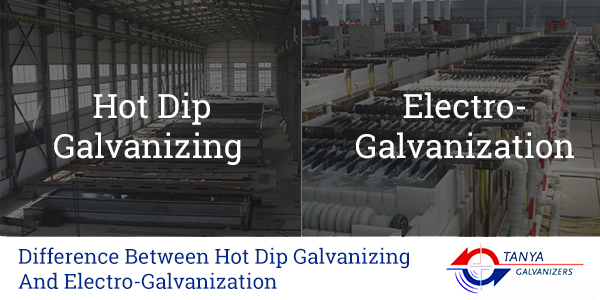There is a common misconception among many that any type of zinc coating is termed as galvanizing. However, the truth is there are present various processes through which application of zinc coating is possible. HDG or hot dip galvanizing tends to refer to those coatings which are created through immersion of steelwork into zinc in molten form. Two variations are present of HDG process, namely, Pre-galvanizing and Batch Galvanizing.
About Batch Hot Dip Galvanizing
It is a process that is generally used for coating completely fabricated articles. Chemical cleaning is involved of work before immersing in galvanizing bath, specified with EN ISO 1461. The process given below offers full coverage including hollow section internal surfaces without the presence of any uncoated area. Highest corrosion protection level is also offered with the formation of thick coating.
Pregalvanized Steel product
The alternative available will be to take specific product like tubes, wires or sheet and use an automated process to galvanize them.
Pregalvanized Steel Sheet
It is considered to be among the most used of all pregalvanized products, specified with EN 10346. The sheet is uncoiled to be passed through reducing atmosphere before it gets immersed for short time period in galvanizing bath. On withdrawing it from galvanizing bath, there is used a mechanical wiper or air knife for eliminating excess zinc, to produce excellent surface finish. However, the result derived is thin coating varying between 7 and 42 μm depending upon the grade and most products having typical coating thickness of about 20 μm. Once galvanizing is completed, the sheet gets recoiled before the stockholder. It is uncoiled and then cut down for sale to produce uncoated edges.
Pre-galvanized Steel Tubes
Using automated procedure to EN 10240, it is possible to galvanize tubes. Here, immersion times re much shorter and on withdrawal, the tube bore may be blown down by steam to provide adequate surface finish. Coating thickness could be high by about 45-55 μm, even though most of the produced products may have significant thinner coating of about 20 to 30 μm. The tubes can be cut again for resale purpose to size to create uncoated edges.
Pre-galvanized Wire
Wire strands, from practical view point may be coated just using automated process, specified with EN 10244-2. If wiping procedures are used, then there will be shorter immersion times to eliminate excess zinc present and to achieve smooth finish. Again, coating thickness could vary with strand diameter and grade. However, it will be typically around 20 to 30 μm. Although it is not possible to galvanize individual strands to EN-ISO 1461, for such processing mesh can be found suitable for achieving thicker galvanized coating.
Coating comparison
It is essential to understand that both pregalvanized and hot dip galvanizing coatings tend to come with different characteristics. Also, as coating weights get specified for the steel sheet, weights tend to include the sheet’s both sides to ensure that coating life becomes half for equivalent coating weight that is specified within EN 10346.
Choose Tanya Galvanizers for all galvanizing needs
Those interested to get superior quality galvanizing can check out the different types of services offered by ‘Tanya Galvanizers’, the leading company in the domain. They are considered to be cost effective and known not to compromise on the quality aspect. They are completely reliable and can be trusted upon for providing the best and cost effective galvanizing solutions as and when required.
Get in touch with us via Email: info@galvanizers.co.in or
Phone: (0265) 2632517 (O) / +91 8000842648








